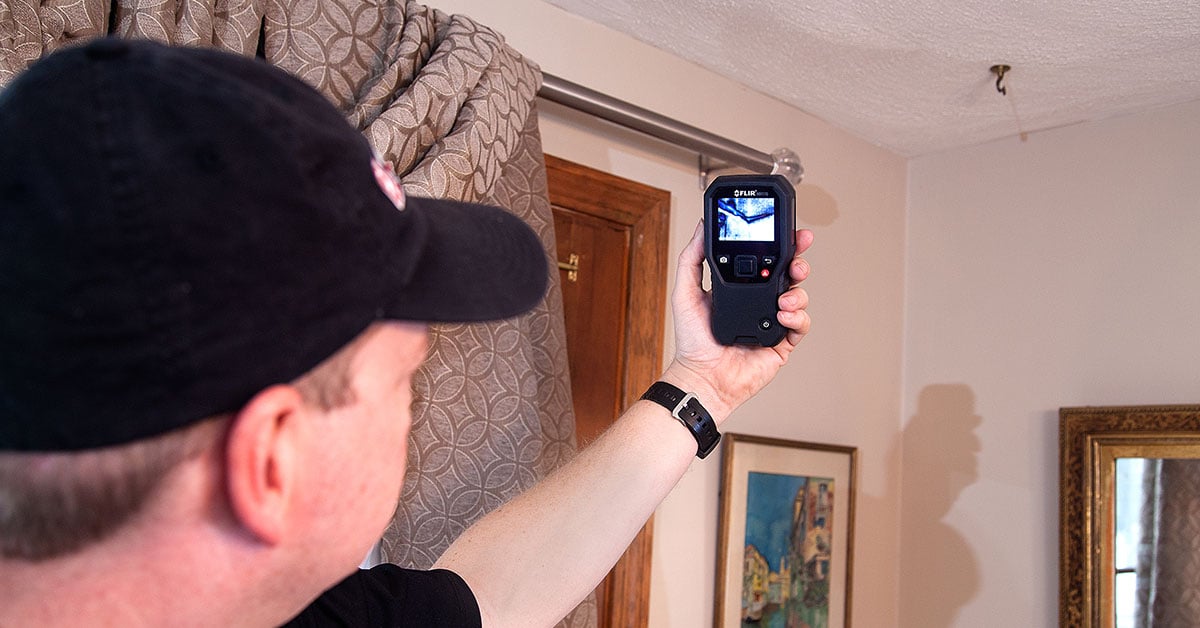Six Proven Methods to Detect Hidden Water Line Leaks Secretly
Six Proven Methods to Detect Hidden Water Line Leaks Secretly
Blog Article
Just about everyone has got their own unique rationale when it comes to Leaking water lines.

Early detection of leaking water lines can minimize a prospective catastrophe. Some little water leaks might not be noticeable.
1. Analyze the Water Meter
Every house has a water meter. Checking it is a guaranteed way that aids you find leaks. For starters, turn off all the water sources. Guarantee no one will purge, make use of the faucet, shower, run the washing equipment or dishwashing machine. From there, most likely to the meter as well as watch if it will certainly change. Given that no one is using it, there need to be no movements. That indicates a fast-moving leakage if it moves. If you discover no modifications, wait an hour or two as well as check back once more. This implies you may have a sluggish leak that can even be underground.
2. Inspect Water Consumption
Evaluate your water bills and track your water intake. As the one paying it, you must discover if there are any type of disparities. If you spot sudden changes, in spite of your consumption coinciding, it implies that you have leaks in your plumbing system. Remember, your water expense must fall under the same range every month. A sudden spike in your expense indicates a fast-moving leak.
On the other hand, a steady increase each month, despite having the same practices, reveals you have a slow leak that's additionally slowly rising. Call a plumber to thoroughly inspect your building, particularly if you really feel a cozy area on your flooring with piping beneath.
3. Do a Food Coloring Examination
When it comes to water consumption, 30% comes from commodes. If the color somehow infiltrates your dish throughout that time without flushing, there's a leakage in between the tank and also dish.
4. Asses Exterior Lines
Don't neglect to check your outdoor water lines too. Must water seep out of the connection, you have a loose rubber gasket. One little leak can throw away bunches of water and also increase your water costs.
5. Assess the scenario and inspect
Home owners need to make it a behavior to inspect under the sink counters and even inside closets for any kind of bad odor or mold development. These two red flags suggest a leakage so timely interest is called for. Doing regular assessments, even bi-annually, can conserve you from a significant trouble.
Examine for stainings and also deteriorating as many home appliances and pipelines have a life span. If you think leaking water lines in your plumbing system, do not wait for it to rise.
Early discovery of leaking water lines can mitigate a possible calamity. Some small water leakages may not be noticeable. Checking it is a proven means that helps you find leaks. One small leakage can waste bunches of water as well as increase your water bill.
If you believe dripping water lines in your plumbing system, do not wait for it to intensify.
WARNING SIGNS OF WATER LEAKAGE BEHIND THE WALL
PERSISTENT MUSTY ODORS
As water slowly drips from a leaky pipe inside the wall, flooring and sheetrock stay damp and develop an odor similar to wet cardboard. It generates a musty smell that can help you find hidden leaks.
MOLD IN UNUSUAL AREAS
Mold usually grows in wet areas like kitchens, baths and laundry rooms. If you spot the stuff on walls or baseboards in other rooms of the house, it’s a good indicator of undetected water leaks.
STAINS THAT GROW
When mold thrives around a leaky pipe, it sometimes takes hold on the inside surface of the affected wall. A growing stain on otherwise clean sheetrock is often your sign of a hidden plumbing problem.
PEELING OR BUBBLING WALLPAPER / PAINT
This clue is easy to miss in rooms that don’t get much use. When you see wallpaper separating along seams or paint bubbling or flaking off the wall, blame sheetrock that stays wet because of an undetected leak.
BUCKLED CEILINGS AND STAINED FLOORS
If ceilings or floors in bathrooms, kitchens or laundry areas develop structural problems, don’t rule out constant damp inside the walls. Wet sheetrock can affect adjacent framing, flooring and ceilings.
https://www.servicemasterbyzaba.com/blog/how-to-detect-water-leakage-in-walls/

Do you appreciate more info about Finding hidden leaks? Place feedback below. We will be pleased to see your feelings about this blog post. In hopes to see you back again later on. Those who enjoyed reading our article please do not forget to pass it around. I cherish reading our article about Locating water leaks.
Set An Appointment Report this page